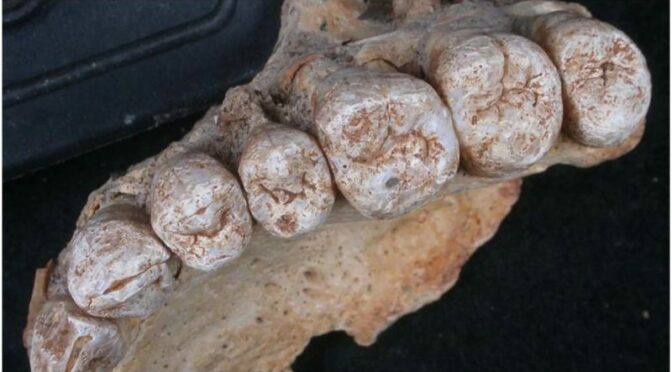The oldest non-African modern human fossil was revealed to be 195,000 years old
Ancestors of our species lived primarily in Africa until migrating to Eurasia 60,000 years ago, according to the general view in paleoanthropology
The Levant and the Middle East may have been colonised by early modern people approximately 120,000 years ago.
A small-scale migration that failed to exit the continent was thought to have been responsible for the disappearance of these people. Israel has recently unearthed a number of new fossils of Homo sapiens that show this common paradigm is nearly entirely incorrect.
Despite the fact that the origins of humans are a murky affair, there is no clear narrative to this storey beyond a few fixed places between which lines can be traced in many (at times contradictory) directions.
Read also: 3000-year-old trousers discovered in Chinese grave oldest ever found
Any palaeoanthropologist worth his or her salt knows that the entire field relies less on archaeological and genetic data than it does on correct interpretations and rational assumptions.
Genomic evidence for early modern and archaic Homo sapiens is relatively limited, with no samples older than 45,000 years. All of this implies that any favourite human-origins hypothesis can change in a flash.
An archaic Homo sapiens jaw piece discovered in 2002 in Misliya Cave, one of Mount Carmel’s numerous caves, has been confirmed by Israeli experts.
the oldest modern human remains outside of Africa have been found at Israel’s Skhul cave, which has produced bones dating from 80,000 to 120,000 years old.
A multinational team of scientists analysed the jaw piece and concluded that it belonged to an early modern person who lived between 177,000 and 194,000 years ago.
Read also: Roadside dig Reveals 10,000 Year Old House In Israel
This is what Mina Weinstein-Evron, an archaeologist at the University of Haifa in Israel, was trying to find.
The “Out of Africa” concept is further undermined by this ancient bone. They had already inhabited western Eurasia a little over 200,000 years before the arrival of the early modern human populations. Israel’s earliest early modern human remains range from 160,000 to 195,000 years ago (the Omo and Herto Skulls).
China’s Dali Skull has been reclassified as belonging to a 260,000-year-old archaic Homo sapiens, according to a new report.
The discovery of an interbreeding event between Neanderthals and archaic Homo sapiens that happened somewhere in Eurasia approximately 270,000 years ago was also a severe blow to current theories.
“Deeply Divergent Archaic Mitochondrial Genome Provides Lower Time Boundary for African Gene Flows into Neanderthals” was the headline of a Nature paper released in late 2016.
Homo sapiens was a highly mobile and widespread species even from their very earliest appearance in the fossil record, as evidenced by additional discoveries of early Homo sapiens populations living at Jebel Irhoud in Morocco around 300,000 years ago and others in China at dates closely matching the Dali skull. A human origin in a human enclave in East Africa approximately 200,000 years ago must be abandoned.
According to John Shea, an archaeologist at Stony Brook University, “the fossil might imply that Israel and the remainder of the Arabian Peninsula were part of an area in which Homo sapiens developed”.
A very early modern human population in Eurasia suggests that we no longer need to explain fossils from that later time by migration into Eurasia 120,000 years ago.
Perhaps they were offspring of more archaic Homo sapiens already existing on the continent, whereas fully modern humans today would be descendants of a handful that survived extinction 73,000 years ago and then spread throughout the continent 13,000 years later. Perhaps it is time to be more sceptical about reports of further migrations out of Africa and to explore alternative interpretations of the existing information.




